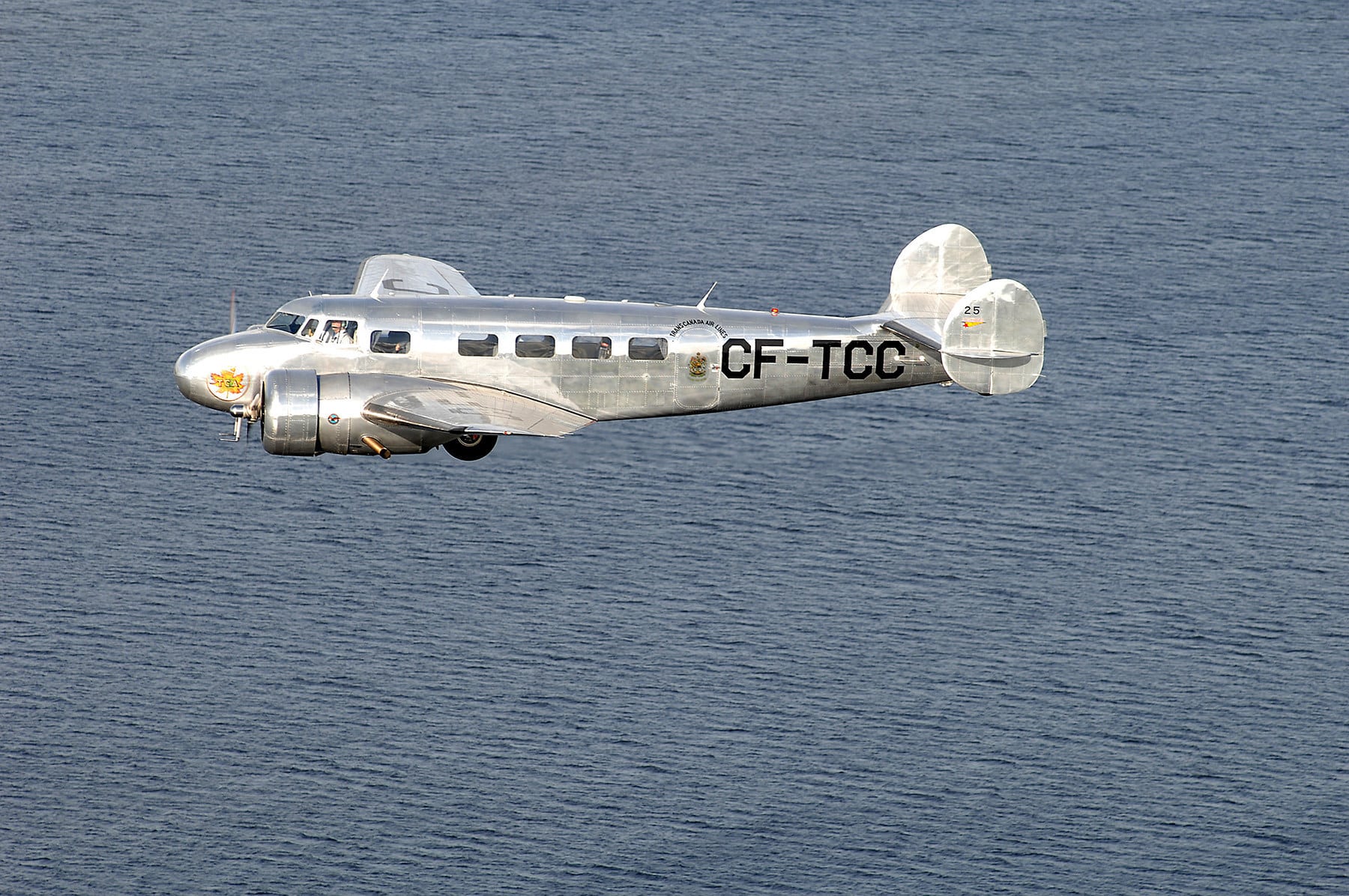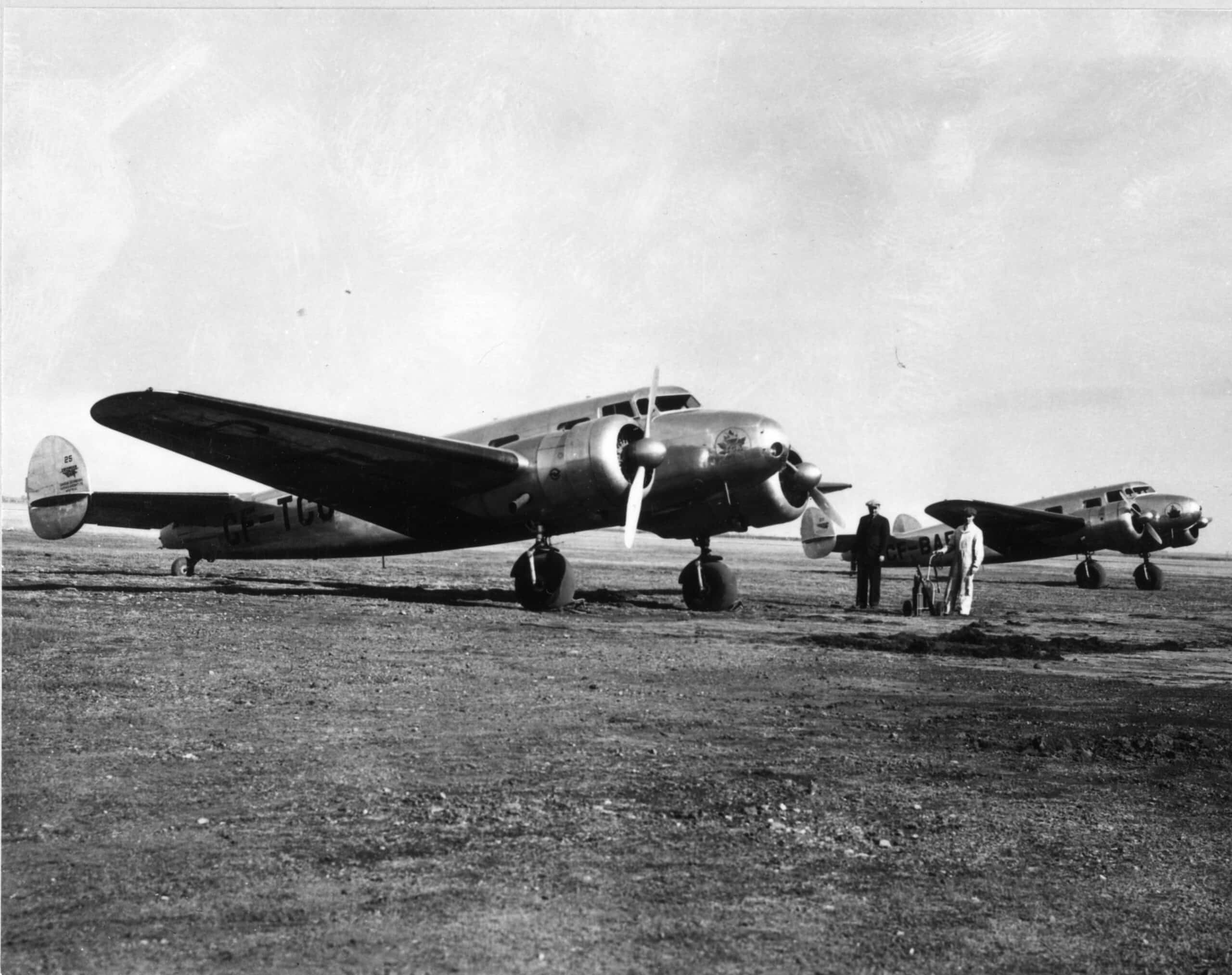Aviation
Air Canada’s Lockheed 10-A Takes to the Skies to Mark the Airline’s 80th

MONTREAL, Sept. 9, 2017 /CNW Telbec/ – In honour of Air Canada‘s 80th anniversary, Air Canada’s Lockheed 10A vintage aircraft is taking to the skies across Canada. After taking off this morning from Vancouver, BC, the L-10A will be making overnight stops as well as fuel stops at airports across Canada, and will be on public display at the Royal Aviation Museum in Winnipeg on September 13 and 14. More information is at: http://www.
As part of the tour, the vintage 10-seat aircraft will overnight in Edmonton, Saskatoon, Regina, Winnipeg, Thunder Bay, Toronto, Ottawa, Montreal, and Halifax. The plane may also make a fuel stop in your community. Look out Calgary, Sudbury, Quebec City, and possibly more! Aviation enthusiasts may track the aircraft’s movements by its registration, CF-TCC, and look out for the silver aircraft in the skies as follows:
- This week: B.C., Alberta, Saskatchewan
- Week of September 11: Saskatchewan, Manitoba, Ontario
- Week of September 23: Ontario, Quebec, Maritimes, and returns to Manitoba.

Winnipeg, Manitoba, Spring 1938
Lockheed 10-A’s CF-TCC & CF-BAF on tarmac preparatory to pilot training flights at Winnipeg During the period when the first copilots were receiving training. Person in dark suit: Capt Kelly Edmison and Maurice McDevitt – Air Engineer (in business in Wpg) in coveralls (CNW Group/Air Canada)

What-s That Silver Plane in the Air? Air Canada-s Lockheed 10-A Takes to the Skies to Mark the Airline-s 80th Anniversary (CNW Group/Air Canada)
About the Lockheed L-10A Electra
The Lockheed L‐10A Electra was designed in the mid-1930s by the Lockheed Aircraft Corporation, to compete against the Boeing 247 and the Douglas DC‐2. This was Lockheed’s first all‐metal twin engine aircraft design, and was first flown on February 23rd, 1934.
Although the aircraft was operated by many commercial airlines in the 1930s, the Lockheed Electra was made most famous by aviatrix Amelia Earhart, who in 1937, disappeared in her L-10E Electra while attempting an around‐the‐world flight. The only difference between the two models is that the L‐10E was equipped with larger, more powerful Pratt & Whitney R1340 engines.
Trans Canada Air Lines and the Lockheed L-10A
On September 1st, 1937 Air Canada’s forerunner, Trans Canada Air Lines (TCA), launched its first commercial passenger flight; a fifty-minute trip from Vancouver to Seattle. TCA had acquired the route plus two Lockheed L‐10A aircraft from Canadian Airways.
In that same month, TCA bought three additional Lockheed L‐10A aircraft, brand new, from the Lockheed factory for $73,000 each. These aircraft were dubbed the “Three Sisters” and carried the registrations CF‐TCA, CF‐TCB, and CF‐TCC. The first aircraft, CF‐TCA can now be found in the Canadian Aviation and Space Museum in Ottawa. CF‐TCC is the silver aircraft flying across Canada and is only one of two Lockheed L‐10A Electra aircraft flying in the world.
The History of CF-TCC
After being operated by Trans Canada Air Lines from 1937 to 1939, CF‐TCC was sold to the Canadian Government and operated by the RCAF as part of the War Effort during World War II. During the next 40 years, the aircraft was sold several times to various private corporations and individuals. In 1975, a retired Air Canada employee recognized the faded old registration marks on the aircraft while attending an air show in Texas. Air Canada kept track of the aircraft until 1983, at which point the company purchased the aircraft back, restored it, and flew it during Air Canada’s 50th Anniversary celebrations in 1986. At the end of the Fifty stop Canadian tour, CF‐TCC was featured in the Air Canada pavilion during Expo 86 in Vancouver.
Since 1986, the aircraft has been maintained in flying condition. Air Canada employee and retiree volunteers from Air Canada Maintenance and Flight Operations have put thousands of hours of personal time into keeping CF‐TCC, our Air Canada heritage, flying for future generations to enjoy.
About Air Canada
Air Canada is Canada’s largest domestic and international airline serving more than 200 airports on six continents. Canada’s flag carrier is among the 20 largest airlines in the world and in 2016 served close to 45 million customers. Air Canada provides scheduled passenger service directly to 64 airports in Canada, 57 in the United States and 95 in Europe, the Middle East, Africa, Asia, Australia, the Caribbean, Mexico, Central America and South America. Air Canada is a founding member of Star Alliance, the world’s most comprehensive air transportation network serving 1,300 airports in 191 countries. Air Canada is the only international network carrier in North America to receive a Four-Star ranking according to independent U.K. research firm Skytrax, which also named Air Canada the 2017 Best Airline in North America. For more information, please visit: www.aircanada.com, follow @AirCanada on Twitter and join Air Canada on Facebook.
SOURCE Air Canada

Aviation
South Korea Introduces Cutting-Edge MRO Center for F-35 and IAI

South Korea is set to make waves in the aerospace industry with the establishment of a cutting-edge Maintenance, Repair, and Overhaul (MRO) hub for F-35 fighter jets and IAI (Israel Aerospace Industries) aircraft.
Central to this initiative is the specialization in converting Boeing 777-ERSF, colloquially known as the “Big Twin,” from passenger to freighter configurations. Under the terms of the agreement, IAI will spearhead the conversion of six B777-300ER and B777-200LR aircraft annually, commencing in 2024. This strategic move is in response to the anticipated surge in demand for wide-body freighter aircraft capable of long-haul flights.
Furthermore, South Korea’s forward-looking vision extends beyond aircraft conversion, with plans to establish a Lockheed Martin F-35 maintenance, repair, and overhaul depot at Cheongju Air Base by 2027. This strategic move not only enhances the operational readiness of South Korea’s air force but also positions the nation as a regional hub for F-35 maintenance expertise.
In preparation for this expansion, thirty Republic of Korea Air Force (ROKAF) engineers and technicians are slated to undergo intensive maintenance training in the United States in 2025, a testament to South Korea’s commitment to fostering local expertise and talent.
IAI’s visionary approach to certification and collaboration underscores the potential for transformative change. With plans for the 777-300ERSF certification process set to unfold in Israel, followed by the rigorous scrutiny of regulatory agencies such as the US Federal Aviation Administration (FAA), the stage is set for the ‘Big Twin’ to soar to new heights of success.
In partnership with esteemed entities like STK and Incheon International Airport Corporation, this collaboration promises to unleash a wave of benefits, amplifying the resilience and competitiveness of the Korean aviation sector while catalyzing job creation and economic prosperity.
Aviation
Lockheed Martin Expresses Interest in Joining AMCA Project

Lockheed Martin, a leading global aerospace and defense company, is demonstrating its dedication to strengthening collaborations with India’s research, industry, and academic sectors. With its rich experience in the aerospace industry and renowned for building some of the world’s most advanced jets, Lockheed Martin is now exploring opportunities to contribute to India’s aerospace sector, potentially providing a significant boost to aerospace technology in the country.
Randy Howard, Vice President of Global Pursuits at Lockheed Martin Aeronautics, recently underscored their interest in exploring “advanced transfer of technology opportunities” with Indian partners, signaling a proactive approach towards fostering technological exchange and advancement in the aerospace domain.
India has been at the forefront of fighter jet development since the 1970s, having produced its own cost-effective fighter jets and combat helicopters, while continually upgrading to maintain competitiveness on a global scale.
Lockheed Martin stands as a dominant force in the aircraft industry, renowned for developing cutting-edge planes like the F35 and F22, some of the most advanced fighter jets globally. They’ve also contributed to projects like the South Korean KF21 aircraft for defense purposes through collaborations.
Now, Lockheed Martin has set its sights on India’s defense sector manufacturing processes, expressing interest in partnering with India on its most anticipated project, the Advanced Medium Combat Aircraft (AMCA), likely to be a 5th generation fighter jet for the Indian military.
Their proposed collaboration could involve a spectrum of advanced technologies, including the Auto Ground Collision Avoidance System (Auto GCAS), a life-saving technology that intervenes to prevent ground collisions, thus significantly enhancing flight safety for Indian pilots.
Lockheed Martin is extending its expertise to design and develop an indigenous cockpit for the F-21 fighter jets, which India is procuring. This collaboration with Tata also includes the development of fighter jet wings. Established in 2023, this partnership adopts a “Ground Floor Design” strategy aimed at equipping India with an in-depth comprehension of 5th-generation cockpit technology and Man-Machine Interface (MMI) systems.
As India’s Fighter jet program advances with finalized aircraft frame and engine prototypes, Lockheed Martin has expressed interest in joining the project. They see a groundbreaking opportunity in cooperative 5th Generation Fighter Development, potentially expediting the AMCA program’s progress through technology and expertise sharing.
Furthermore, Lockheed Martin is keen on collaborating on large-wing, jet-powered UAV platforms, which could enhance India’s unmanned aerial capabilities.
While discussions are ongoing, and specific collaboration details await finalization, this initiative represents a potentially transformative stride in India’s aerospace self-reliance journey and Lockheed Martin’s strategic engagement with the Indian market.
Aviation
Can Airline Seat Cushions Be Used As Life Jackets?

In the event of an aircraft ditching into water, there’s a common question: Can aircraft seats serve as an alternative to life jackets for flotation? The answer lies in understanding their respective functions.
While seat cushions can provide some buoyancy in water, they are not intended nor certified to function as life jackets. Their primary purpose is to offer cushioning for passengers during flight. On the other hand, life jackets are meticulously engineered to keep individuals afloat in water, equipped with buoyancy materials, secure straps, and reflective elements for visibility. They offer numerous advantages over mere cushions.
While a seat cushion might offer temporary assistance in staying afloat, it’s not a dependable substitute for a proper life jacket during an emergency. It’s crucial to utilize approved safety equipment when near bodies of water. A life jacket, designed to keep a person buoyant for extended periods, offers the rigidity needed for prolonged flotation and allows for easy movement of the arms to navigate effectively.
What fabric is used in aircraft seats?
Seats are meticulously designed to fulfill multiple purposes, ensuring passenger comfort, safety, and protection from unforeseen circumstances like fires and accidents. A typical design incorporates an aluminum frame with blocks of polyurethane foam affixed to it. Additionally, a layer of fire-resistant fabric, such as Kevlar or Nomex, is often applied over this framework, topped with a layer of cloth or leather.
Leather seats, while luxurious, are more expensive compared to traditional cloth seats. The majority of fabrics used in seat upholstery contain at least 90% wool fiber, with the remainder typically consisting of polyamide (nylon). Wool stands out as the primary fiber chosen for commercial airline seating fabric due to its desirable properties and suitability for such applications.
What is the lightest economy seat?
In recent times, airlines have been downsizing seat dimensions to accommodate more passengers, resulting in reduced cushion length and leg space. This contrasts with earlier times when airlines offered more generously cushioned seats and ample amenities.
According to Recaro Seats Company, their SL3710 model represents the lightest economy class seat available, weighing in at a mere 8 kg (17.6 lb.), setting a new standard in aircraft seating.
For individuals weighing more than 350 pounds, fitting into a standard economy-class seat can be a challenge due to the narrower dimensions. Economy seats, also referred to as “coach,” “standard,” or “main cabin” seats, typically range from about 40 to 48 centimeters in width, further emphasizing the need for more accommodating seating options.





















